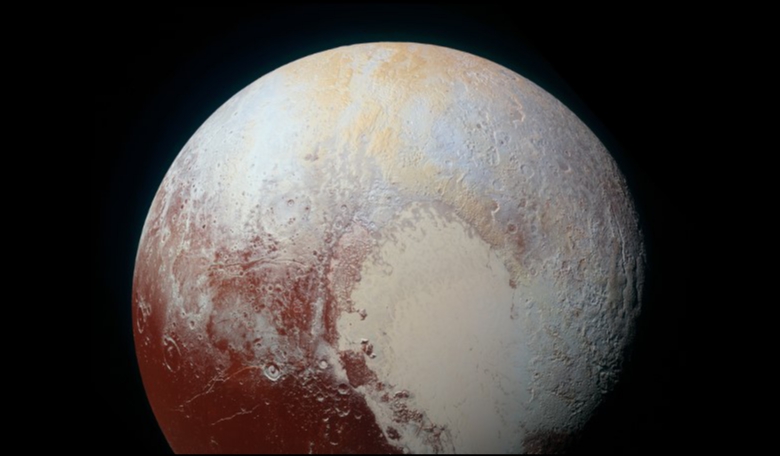Using a thermal evolution model for Pluto updated with data from NASA's New Horizons spacecraft – the first probe to get an up-close look at the dwarf planet – a Brown University Ph.D. Student has suggested that a subsurface ocean may still be present under Pluto’s icy crust.
Data gathered last year by New Horizons on the loneliest planet in our Solar System revealed an unexpected find; Pluto, it seems is expanding. If, in the very distance past many millions or a few billions of years ago, this captivating planet had an ocean, models show that the freezing process would result in the entire planet shrinking, not growing. But with its bulging waistline, new research shows this could be a sign that a liquid ocean is still present and sloshing around under its icy crust.
"Thanks to the incredible data returned by New Horizons, we were able to observe tectonic features on Pluto's surface, update our thermal evolution model with new data and infer that Pluto most likely has a subsurface ocean today," said Noah Hammond, a graduate student in Brown's Department of Earth, Environmental and Planetary Sciences, and the study's lead author.
These features, that mark Pluto’s mottled surface are deep sinuous faults, hundreds of kilometres long which indicate upheaval due to tectonic activity. "What New Horizons showed was that there are extensional tectonic features, which indicate that Pluto underwent a period of global expansion," Hammond said. "A subsurface ocean that was slowly freezing over would cause this kind of expansion."
It is possible that these features were created as a result of a gravitational tug of war with its moon, Charon. However, some of the tectonics look fairly fresh (from a geological perspective) and it is thought that the active gravitational dynamics between the two have long since died down. Instead scientists think heat-producing radioactive elements within Pluto's rocky core were sufficient enough to melt part of the planet's ice shell. As Pluto’s orbit takes it far from the reaches of the Sun, the frigid conditions of space would eventually start to refreeze these melted segments, causing the surface to buckle as it expands and manifesting as extensional tectonics on the planet’s surface. Exactly the sort of features observed with New Horizons.
Nonetheless, if a subsurface ocean had frozen a sufficiently long time ago, it is suggested that low temperatures and high pressure within Pluto would quickly convert normal ice we all familiar with to a different phase called ice II and, as the crystalline structure of ice II is more compact than standard ice, it would occupy a smaller volume and thus lead to a global contraction on Pluto. However, the formation of ice II is dependent on the thickness of Pluto's ice shell. The magic number determining whether ice II forms or not is 260 kilometres. If the shell is thinner than that, the ocean could have frozen without forming ice II and the ocean could have frozen completely without causing contraction. If the shell is thicker than 260 kilometres, then compacted ice can form.
"We don't see the things on the surface we'd expect if there had been a global contraction," Hammond said. "So we conclude that ice II has not formed, and therefore that the ocean hasn't completely frozen." Indeed models suggest that Pluto’s ice shell is nearer 300 or more kilometres thick, helping to substantiate this theory. Not only that, but the multi-hued appearance of Pluto’s surface is indicative of water, nitrogen and methane ices littering the planet and their discovery bolster the case for a thick ice shell. "Those exotic ices are actually good insulators," Hammond said. "They may be helping Pluto from losing more of its heat to space."
It is a tantalising prospect that in the furthest reaches of the solar system, an ocean environment may exist on a planet that has seen its fair share of controversy. “The possibility that you could have vast liquid water ocean habitats so far from the sun on Pluto – and that the same could also be possible on other Kuiper belt objects as well – is absolutely incredible,” remarked Hammond.











